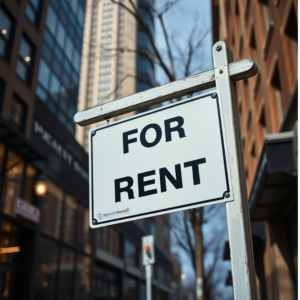The U.S. rental market is heading into a year of potential stabilization as supply and demand begin to level out. After a period of skyrocketing rents and a tight housing inventory, 2024 saw a record-breaking surge in new rental units—nearly 600,000—helping ease affordability concerns in some regions. As we move into 2025, industry experts predict a shift in market dynamics that could influence rental prices, availability, and overall tenant behavior.
How the Surge in New Rentals is Reshaping the Market
The significant influx of rental units in 2024 marked one of the most aggressive expansions in recent history. As a result, median asking rents across the U.S. saw a decline, with the average monthly rent dropping to $1,595—a figure not seen since early 2022. This cooling effect was a welcome relief for renters who had struggled with steep price hikes over the past few years.
However, the rapid expansion of rental housing isn’t expected to continue at the same pace. Developers have begun pulling back on new construction projects, anticipating that the market will gradually absorb the available inventory. This shift means that while rents have declined in some markets, they may start to rebound as demand catches up with supply.
What to Expect for Rent Prices in 2025
With the slowdown in new construction, experts forecast that rent growth will return in 2025, albeit at a more moderate pace. RealPage Inc. projects that nearly half of the top 50 U.S. rental markets will see rent increases between 2% and 3%, while roughly 35% of these markets could experience rent growth exceeding 3%.
This modest upward trend indicates a return to a more balanced market—one where tenants may have more choices than before, but where landlords still retain pricing power in high-demand areas. The regions likely to see the strongest rent growth will be those where housing supply remains constrained or where economic activity continues to drive population increases.
Housing Affordability Still a Major Concern
Despite the increase in rental supply, affordability remains a pressing issue for many Americans. The cost of homeownership continues to rise due to elevated mortgage rates and record-high home prices, keeping many would-be buyers in the rental market longer than they anticipated.
This trend has significant implications:
- Increased competition for mid-range rental units – As aspiring homeowners delay purchasing, they contribute to sustained demand for rentals, particularly in urban and suburban markets.
- Slower vacancy rate growth – While new apartment developments have helped alleviate shortages, demand remains strong enough to keep occupancy rates stable.
- Landlords regaining pricing power – With demand staying consistent and new construction slowing, landlords may find themselves in a position to negotiate higher lease renewals.
What This Means for Renters and Property Managers
For renters, 2025 may still present opportunities to secure favorable lease agreements, especially in areas where rental supply has outpaced demand. However, those in competitive markets should prepare for modest rent increases and potentially stricter lease terms.
For property managers and landlords, the evolving market conditions call for strategic pricing and tenant retention efforts. While supply has increased, ensuring high occupancy rates will require competitive pricing, quality amenities, and strong customer service.
Looking Ahead: A More Balanced Rental Market
While the extreme rent spikes of the past few years may be behind us, the rental market is still adjusting to shifting economic conditions. As we head into 2025, the industry is moving toward a healthier balance between supply and demand, offering more stability for both renters and property owners.
However, affordability challenges and broader economic factors will continue to shape the market, making it essential for both tenants and landlords to stay informed and adaptable in the year ahead.
Source: The Business Journals

